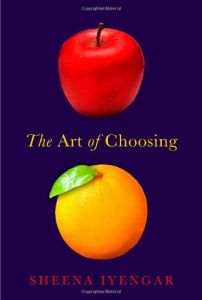Join getAbstract to access the summary!

Join getAbstract to access the summary!
Sheena Iyengar
The Art of Choosing
Twelve, 2010
What's inside?
This engaging exploration of decision making addresses the nature and power of choice and its role in everyone’s lives.
Recommendation
Easy choices – like cake or death, as in British comedian Eddie Izzard’s famous routine – don’t require much thought or study. But almost any other choice invites complications and confusion, a problem social psychologist Sheena Iyengar mines and turns into fascinating reading. In this study of different facets of decision making, she delves into such topics as whether your devotion to Coca-Cola relies on its taste or its ties to Santa Claus, and she touches upon subjects as varied as fashion, rats, jam, arranged marriage, and even the life and death of premature babies. This compelling book answers questions about decisiveness with intriguing studies, though you may not agree with every conclusion. Perhaps Iyengar could have offered her suggestions for improved, real-life decision making more succinctly, but she provides excellent detail, plus take-home tips for making better choices in the supermarket or the boardroom. Given the fine job she’s done combining research with gee-whiz revelations, getAbstract suggests this book to managers, marketers, public relations professionals and all sales executives.
Summary
About the Author
Sheena Iyengar, Ph.D., is a business professor at Columbia University. Her work has appeared in many publications, including the New York Times, Fortune and The Wall Street Journal.
















Comment on this summary